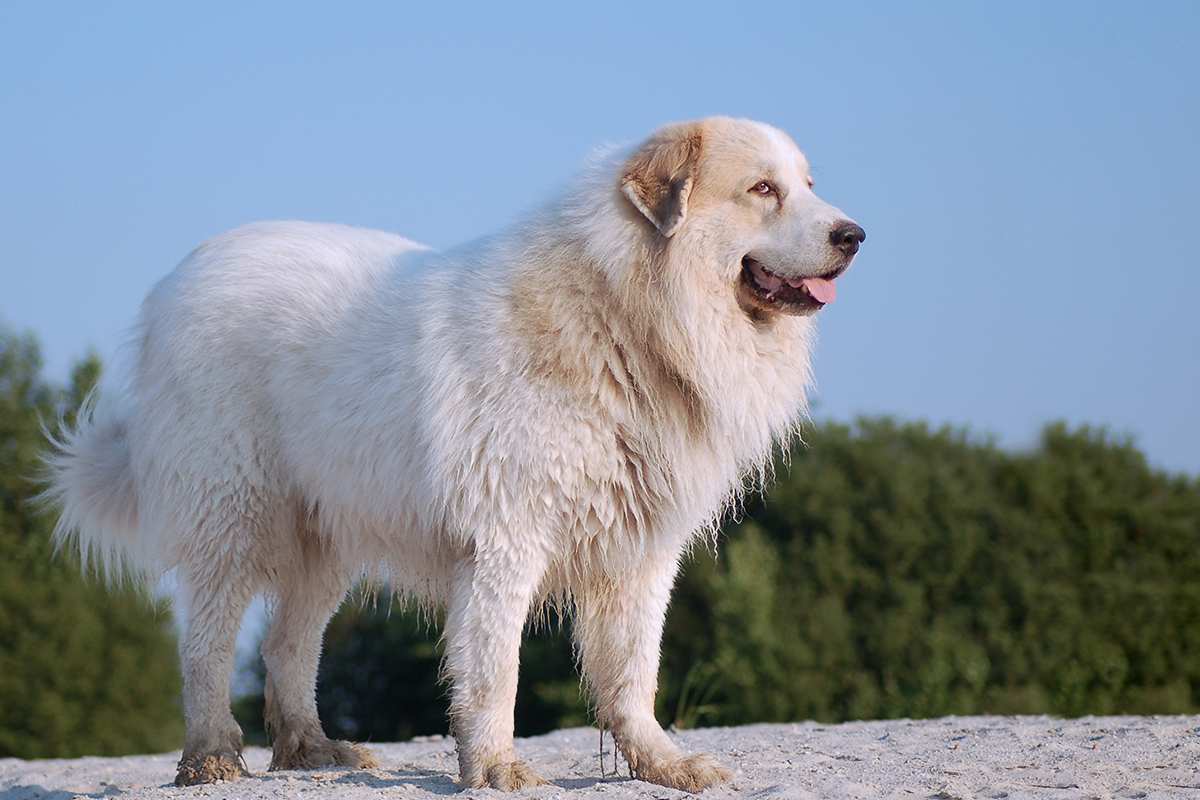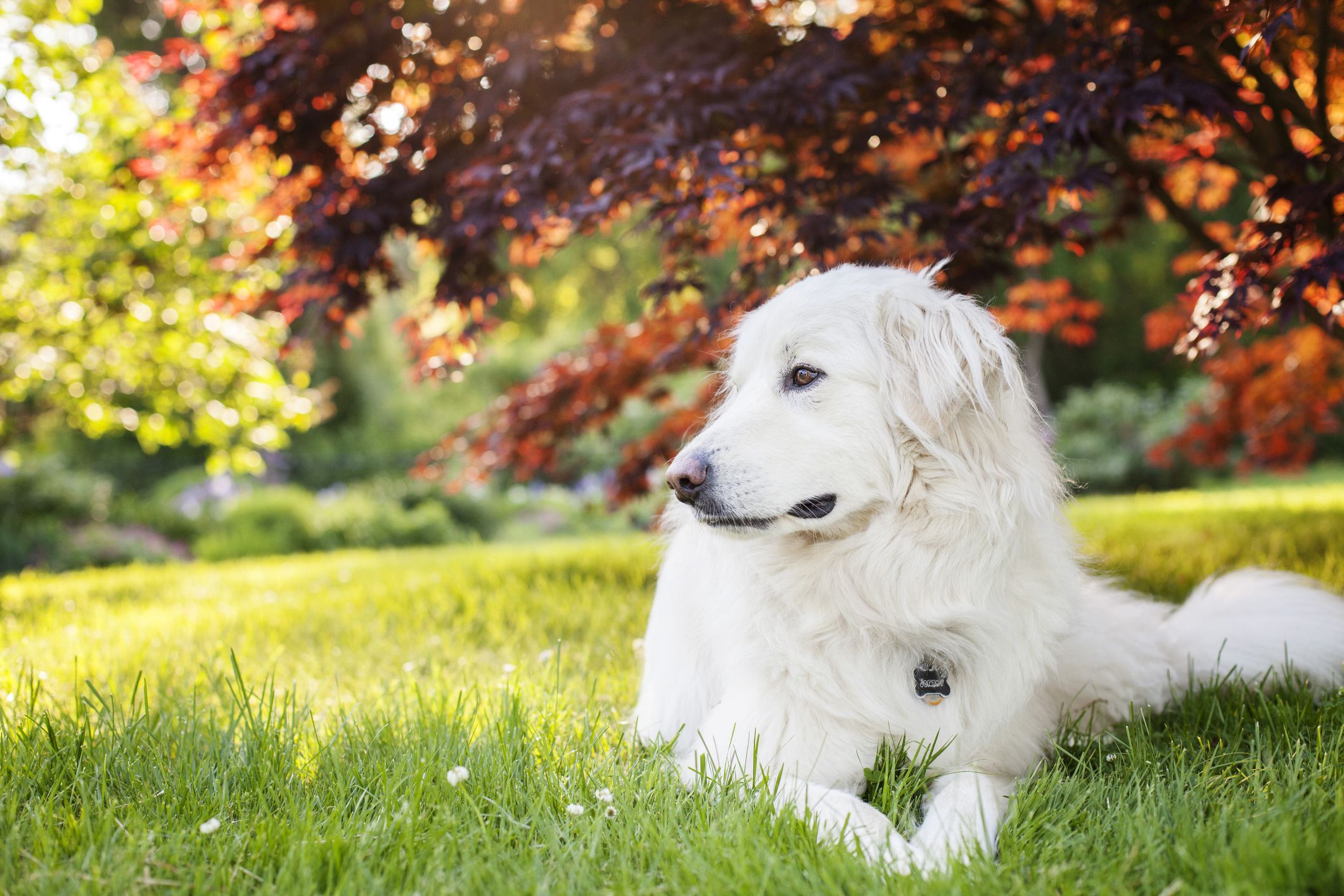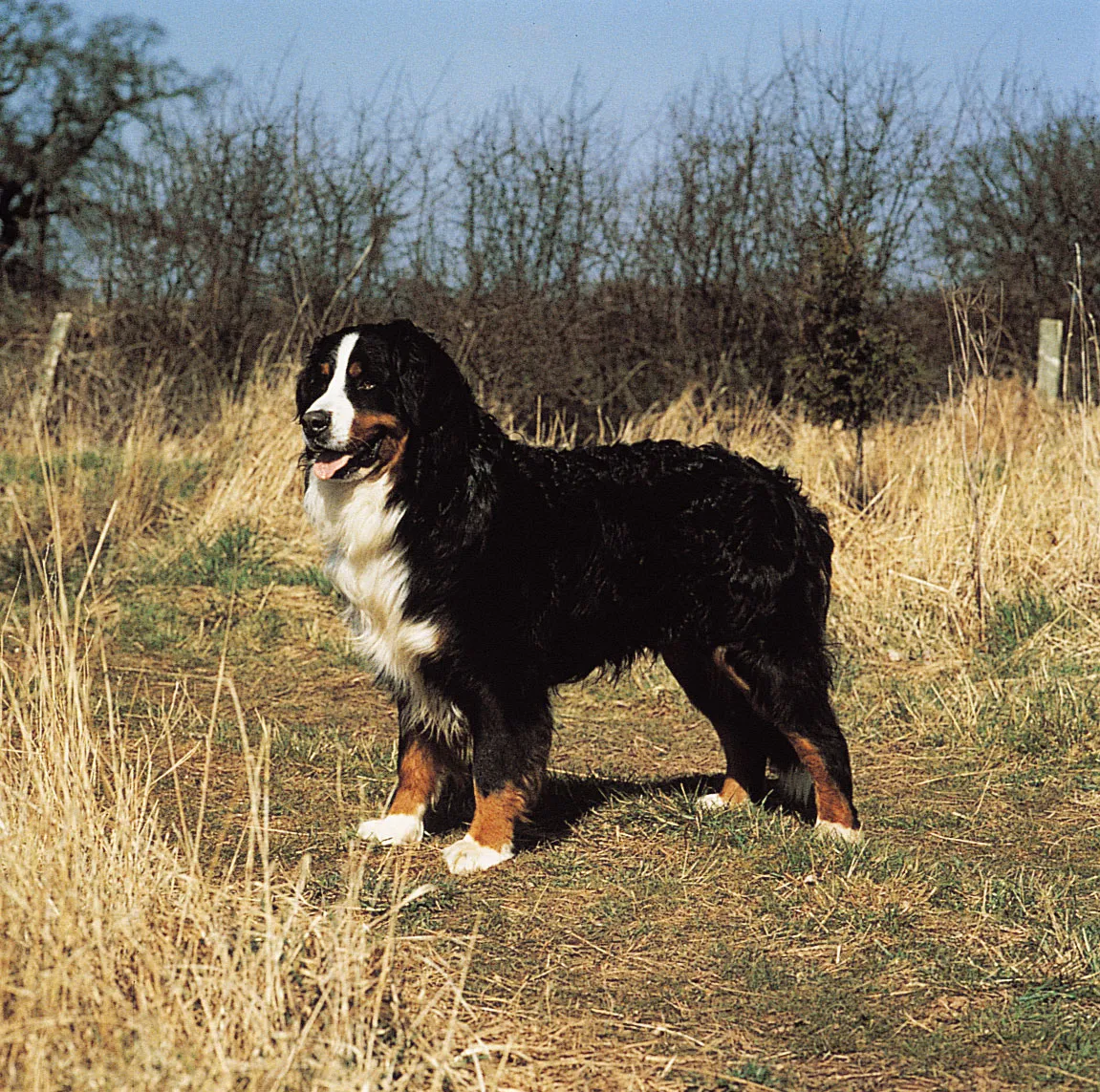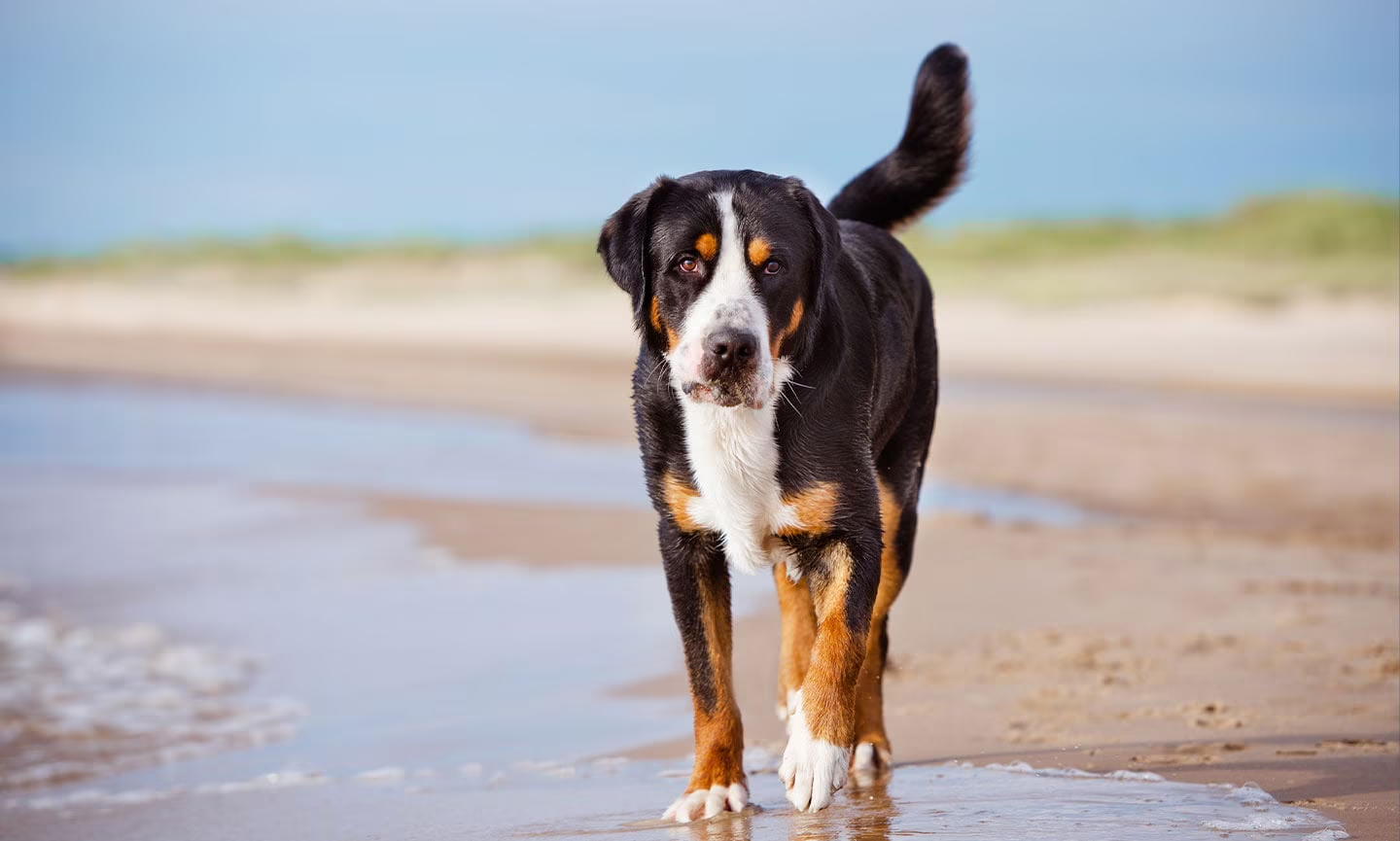SECTION 1: TAXONOMIC CLASSIFICATION & EVOLUTIONARY ORIGINS
Kingdom: Animalia
Phylum: Chordata
Class: Mammalia
Order: Carnivora
Family: Canidae
Genus: Canis
Species: C. familiaris
Breed: Great Pyrenees (alt. Pyrenean Mountain Dog, Chien de Montagne des Pyrénées)
The Great Pyrenees represents one of several ancient livestock guardian breeds developed in isolated mountainous regions across Europe and Asia. Archaeological evidence suggests that large white guardian dogs resembling the modern Great Pyrenees have existed in the Pyrenees mountain range (demarcating the border between present-day France and Spain) since at least 3000 BCE.
Genetic analysis places the Great Pyrenees among the oldest established European dog breeds, with significant divergence from Asian breeds occurring approximately 11,000-14,000 years ago. Mitochondrial DNA analysis confirms close genetic relation to other European livestock guardian dogs, including the Maremma Sheepdog (Italy), Kuvasz (Hungary), and Slovenský Čuvač (Slovakia).
SECTION 2: MORPHOLOGICAL CHARACTERISTICS & PHYSICAL ADAPTATIONS
The Great Pyrenees exhibits a suite of physical adaptations specifically evolved for its historical function as a livestock guardian in alpine environments.
2.1 Size and Structure
| Male | Female | |
|---|---|---|
| Height (at withers) | 27-32 inches (68-81 cm) | 25-29 inches (63-74 cm) |
| Weight | 100-160 pounds (45-73 kg) | 85-115 pounds (38-52 kg) |
| Body Length (withers to base of tail) | Approximately 10% greater than height | Approximately 10% greater than height |
The skeletal structure is substantial but not excessively heavy, allowing for efficient movement over varied mountain terrain. The frame exhibits balanced proportions, with a level topline and deep chest providing lung capacity necessary for work at high altitudes. Double dewclaws on the rear legs—a distinguishing characteristic of the breed—may have provided additional traction on steep slopes.
2.2 Coat Composition and Function
The Great Pyrenees possesses a weather-resistant double coat consisting of:
- Outer coat: Long, flat, coarse guard hairs that repel moisture and provide protection from branches, predator bites, and UV radiation
- Undercoat: Dense, fine, woolly insulation that maintains thermal regulation in extreme temperatures
Coat color is predominantly white, often with badger (mixed gray), tan, or reddish-brown markings primarily confined to the head, ears, and occasionally base of tail. This coloration served multiple functions in the working context:
- Camouflage in snowy alpine environments
- Visual distinction from predators (primarily wolves) when guarding in low light
- Recognition by sheep, reducing stress responses in the flock
2.3 Sensory Adaptations
The Great Pyrenees exhibits enhanced sensory capabilities specifically adapted for its guardian role:
- Vision: Exceptional night vision and motion detection, with eyes positioned for maximum peripheral awareness
- Hearing: Acute auditory sensitivity, particularly to high-frequency sounds characteristic of predator movement and distressed livestock
- Olfaction: Highly developed scent discrimination allowing detection of predators at significant distances, even downwind
SECTION 3: BEHAVIORAL ADAPTATIONS & COGNITIVE CHARACTERISTICS
3.1 Vigilance Patterns and Guard Behavior
The Great Pyrenees displays a species-atypical vigilance cycle, characterized by increased alertness during nighttime hours when predator activity is highest. This nocturnal vigilance pattern manifests in several observable behaviors:
- Periods of apparent rest while maintaining environmental awareness (ear movements, periodic scanning)
- Regular perimeter checks of territory boundaries
- Strategic positioning at elevated vantage points
- Distinctive warning vocalizations with frequency modulation based on threat assessment
Unlike herding breeds that control livestock movement, the Great Pyrenees employs a passive guardian strategy, remaining with the flock and intervening only when threats are detected. This behavioral adaptation minimizes energy expenditure while maximizing protective efficiency.
3.2 Independence and Decision-Making Capacity
Perhaps the most significant behavioral adaptation of the Great Pyrenees is its exceptional capacity for independent decision-making. Historical working conditions required these dogs to:
- Assess potential threats without human guidance
- Determine appropriate response levels to various stimuli
- Problem-solve in complex scenarios (weather events, lost livestock, multiple predators)
- Self-regulate resource consumption (food, water, rest) over extended periods
This independence—often mischaracterized as “stubbornness” in companion settings—represents a highly specialized cognitive adaptation for autonomous function in challenging environments. Unlike breeds developed for constant handler direction (retrievers, herding dogs), the Great Pyrenees was selectively bred for trustworthy independent judgment.
3.3 Social Structure and Bonding Patterns
The Great Pyrenees exhibits complex social behavior characterized by:
- Resource-based territoriality: Protection of defined areas containing valued resources (historically flocks, now family/property)
- Hierarchical flexibility: Capability to function within established social structures while maintaining independent assessment capabilities
- Discriminating bonding patterns: Formation of strong attachments to “in-group” members (historically shepherds and flock, now family) while maintaining cautious assessment of unfamiliar individuals
This social framework facilitates the breed’s primary function: discerning between legitimate threats and non-threats, with appropriate response calibration for each scenario.
SECTION 4: ENVIRONMENTAL REQUIREMENTS & MANAGEMENT PROTOCOLS
4.1 Spatial and Environmental Considerations
The Great Pyrenees’ historical function as a territorial guardian necessitates specific environmental accommodations for optimal psychological and physical well-being:
| Environmental Factor | Optimal Provision | Consequences of Deprivation |
|---|---|---|
| Territory | Secure, visually accessible perimeter of at least 0.5 acres (0.2 hectares) | Increased boundary-testing, escape behavior, anxiety |
| Surveillance Opportunities | Elevated positions allowing visual scanning of surroundings | Frustration, excessive vocalization, restlessness |
| Climate Regulation | Access to shade, shelter, and cool surfaces; temperature preferably below 75°F (24°C) | Heat stress, reduced activity, potential health complications |
While adaptable to various living situations, the Great Pyrenees exhibits measurably reduced stress indicators when provided with environmentally appropriate accommodations that facilitate expression of natural guardian behaviors.
4.2 Exercise Requirements and Activity Management
Contrary to expectations based on size, the Great Pyrenees evolved for energy conservation punctuated by brief periods of intense activity. The optimal exercise regimen includes:
- Moderate daily walking (30-60 minutes) with opportunity for environmental monitoring
- Regular but not excessive cardiovascular exertion
- Access to varied terrain when possible
- Mental stimulation through environmentally enriched spaces
Exercise should be calibrated to the individual dog’s age, health status, and climate conditions, with particular attention to avoiding overexertion in warm temperatures due to the insulating properties of the double coat.
4.3 Nutritional Requirements
The Great Pyrenees’ metabolic efficiency—developed for conditions of potential resource scarcity in mountain environments—necessitates careful nutritional management to prevent obesity and associated health complications. Key considerations include:
- Caloric intake approximately 20-30% lower than other breeds of comparable size
- Protein levels moderate (21-25%) with emphasis on high biological value sources
- Controlled fat content (12-16%) with adequate omega fatty acids for coat health
- Portion control and limited treat supplementation
Many Great Pyrenees demonstrate naturally moderate food drive and self-regulation of intake, though individual variation exists. Nutritional adjustments should account for activity level, age, and reproductive status.
4.4 Grooming and Coat Maintenance
The function-specific coat of the Great Pyrenees requires systematic maintenance for optimal condition:
- Regular brushing: Weekly thorough brushing to prevent matting and remove loose undercoat
- Seasonal management: Increased grooming frequency during biannual shedding periods
- Minimal bathing: Quarterly or as-needed bathing to preserve natural coat oils
- Ear maintenance: Regular inspection and cleaning to prevent moisture accumulation
The coat possesses natural dirt-shedding properties and should not be shaved, as this disrupts thermal regulation and can permanently alter coat texture and regrowth patterns.
SECTION 5: HEALTH CONSIDERATIONS & LONGEVITY FACTORS
5.1 Common Health Concerns
As with most large breeds, the Great Pyrenees is predisposed to specific health conditions that require monitoring and preventative management:
| Condition | Prevalence | Management Approach |
|---|---|---|
| Hip Dysplasia | Moderate (12-15%) | Radiographic screening, weight management, appropriate exercise |
| Elbow Dysplasia | Low-Moderate (8-10%) | Radiographic screening, controlled growth rate in puppies |
| Gastric Dilatation-Volvulus (Bloat) | Moderate (deep-chested breed risk) | Multiple small meals, limited exercise around feeding, possible preventative gastropexy |
| Osteosarcoma | Moderate (large breed risk) | Regular veterinary examination, early intervention for persistent lameness |
| Patellar Luxation | Low (5-7%) | Orthopedic evaluation, maintaining appropriate weight |
| Entropion/Ectropion | Low-Moderate (8-10%) | Regular ophthalmologic screening, surgical correction if indicated |
Responsible breeding practices with appropriate health screening have reduced the incidence of many genetic conditions in well-bred specimens.
5.2 Longevity and Aging Considerations
The Great Pyrenees exhibits a life expectancy of 10-12 years, which is notable for a breed of its size. Factors associated with increased longevity include:
- Maintenance of appropriate body condition (score 4-5/9)
- Regular preventative veterinary care
- Moderate, consistent exercise throughout life
- Mental stimulation and social engagement
- Appropriate living conditions (particularly temperature regulation)
Age-related changes typically present gradually, with reduced activity level and increased rest periods normal in geriatric individuals. Mobility support, weight management, and pain control become increasingly important aspects of care in the senior life stage.
SECTION 6: BEHAVIORAL TRAINING & SOCIALIZATION PROTOCOLS
6.1 Critical Socialization Period
The Great Pyrenees requires systematic socialization during the critical developmental window (4-14 weeks) with particular emphasis on:
- Controlled exposure to diverse human demographics (varying ages, appearances, behaviors)
- Careful introduction to unfamiliar dogs with monitoring of emerging response patterns
- Environmental variation (surfaces, sounds, visual stimuli)
- Positive association building with handling, restraint, and veterinary procedures
Unlike some breeds where generalization occurs readily, the Great Pyrenees’ discriminating guardian instinct necessitates broad exposure to establish appropriate threat/non-threat categorization frameworks during development.
6.2 Training Methodology and Efficacy
The Great Pyrenees’ cognitive framework and evolutionary history require specific adaptations to training protocols:
| Training Approach | Efficacy | Notes |
|---|---|---|
| Positive Reinforcement | High | Particularly effective when reinforcers align with natural motivations (territory access, approval from bonded individuals) |
| Negative Reinforcement | Low-Moderate | Can trigger opposition reflex; limited utility |
| Positive Punishment | Very Low | Often counterproductive; may damage trust relationship and increase defensive responses |
| Negative Punishment | Moderate | Effective primarily with social reinforcers (attention, access to valued resources) |
The Great Pyrenees responds most consistently to training approaches that respect their evolutionary need for situational assessment and decision-making capacity. Protocols that emphasize collaborative problem-solving rather than strict obedience yield superior outcomes across multiple behavioral metrics.
6.3 Integration with Other Animals
The Great Pyrenees’ historical function as a livestock guardian manifests in specific interspecies behavioral patterns:
- With livestock/small animals: Natural protective response, typically minimal prey drive if properly socialized
- With resident companion animals: Generally tolerant and protective once established as “in-group”
- With unfamiliar dogs: Measured assessment; may display territorial behavior or same-sex aggression without proper management
Early and ongoing socialization significantly influences these response patterns, though the underlying guardian template remains consistent. Careful supervision and controlled introductions are recommended when incorporating new animals into the household.
SECTION 7: SELECTION CRITERIA & COMPATIBILITY ASSESSMENT
The Great Pyrenees’ specialized adaptations for autonomous guardian function make it an unsuitable choice for many potential owners. Ideal placement requires alignment between the breed’s inherent characteristics and the owner’s lifestyle, expectations, and environment.
7.1 Compatibility Indicators
The following factors correlate positively with successful Great Pyrenees ownership:
- Rural or semi-rural property with secure boundaries
- Limited proximity to neighbors (due to natural alarm vocalizations)
- Experience with independent working breeds
- Realistic expectations regarding training outcomes
- Appreciation for subtle communication and relationship nuance
- Low preference for precision obedience
- Stable daily routine with minimal disruption
7.2 Contraindications
Conversely, the following factors predict reduced likelihood of successful integration:
- High-density urban living situations
- Frequent changes in household composition
- Expectations of high-level obedience or performance sport participation
- Limited tolerance for vocalizations
- Inability to provide appropriate containment
- Significant time constraints for socialization and training
7.3 Acquisition Considerations
For prospective owners whose situation aligns with the breed’s requirements, the following acquisition pathways should be considered, in order of recommendation:
- Breed-specific rescue: Adult dogs with known behavioral histories; particularly suitable for first-time owners of the breed
- Reputable preservation breeder: Focus on temperament, health testing, and historical working functionality
- Working line evaluation: Assessment of adult dogs from working environments transitioning to companion homes
Due to their specific behavioral requirements and adaptations, Great Pyrenees are significantly more likely to require rehoming when obtained through non-specialized sources that fail to match owner expectations with breed characteristics.
SECTION 8: CONCLUSION & SUMMARY DATA
The Great Pyrenees represents an extraordinary example of specialized functional adaptation, having maintained consistent form and behavioral characteristics for thousands of years. Their physical and cognitive traits—developed for autonomous guardian function in challenging alpine environments—create both unique capabilities and specific care requirements in companion settings.
When appropriately placed with compatible owners and environments, the Great Pyrenees offers an exceptional relationship characterized by mutual respect, nuanced communication, and steadfast loyalty. However, their specialized adaptations render them unsuitable for many conventional pet ownership situations.
Potential owners are strongly encouraged to conduct thorough research, engage with breed-specific resources, and honestly evaluate their capability to meet the unique needs of this ancient and noble guardian breed before pursuing acquisition.
| Attribute | Rating (1-10) | Notes |
|---|---|---|
| Exercise Requirements | 5 | Moderate needs; emphasis on mental stimulation over physical exertion |
| Grooming Requirements | 7 | Regular maintenance; intensive during seasonal shedding |
| Training Complexity | 8 | Requires understanding of breed-specific cognitive framework |
| Adaptability to Urban Environments | 3 | Poor candidate for high-density living |
| Compatibility with Children | 8 | Generally excellent when properly socialized; supervision recommended due to size |
| Guardian Capacity | 9 | Natural protective instinct without excessive reactivity when properly socialized |
| Vocalization Tendency | 8 | Significant; particularly during nocturnal hours |
This field guide is provided as an educational resource for responsible ownership consideration and does not constitute veterinary advice. Individual variation exists within the breed, and all management protocols should be adapted to specific circumstances under appropriate professional guidance.




